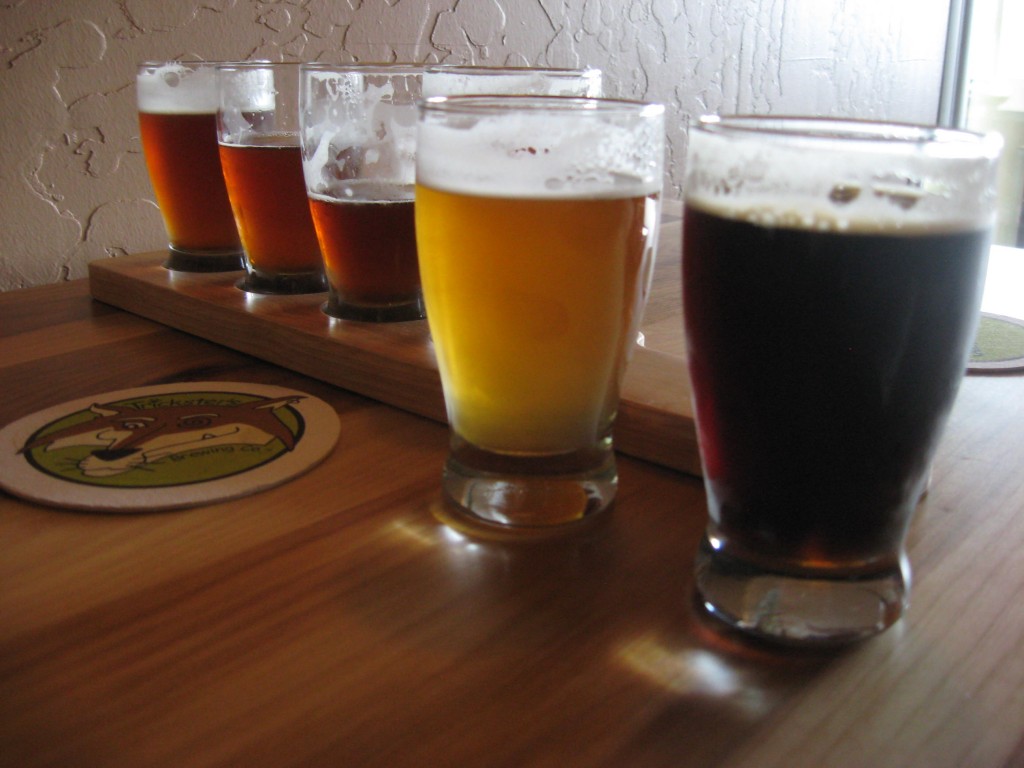Written by Jim Lundstrom for scenenewspaper.com (Wisconsin)
Mud Slinger, a tasty nut brown from Redhook. Soft and malty and just on the edge of darkness. Excellent session beer.
Speaking of soft and malty, I picked up a four pack of an Austrian dunkel that had been discounted, Hirter Morchl, a dark lager made by the Hirt Brewery, which has been making beer since 1270.
I’d never heard of the brewery before, but I’ve also never had an Austrian beer that hasn’t charmed me with a quality unlike any other beer in the world. The bottle proudly proclaimed the use of Alpine spring water. Something about the Austrian aquifer produces lovely, soft beers.
Judges at the 2008 World Beer Championships were so impressed with Hirter Morchl that they made it head of the class all by itself with a Platinum Award. Here’s how those judges described it: “Dark reddish copper color with a frothy tan head. Aromas of chocolate pudding, delicate baking spices and roasted nuts follow through on a soft, satiny entry to a drying medium body with accents of toffee, roasted root vegetable, and cream. Finishes mildly with a cocoa-dusted nut and grain fade. Fantastic.â€
Obviously those judges have far more refined snouts and palates than I do. Chocolate pudding? Really? I guess I don’t know how chocolate pudding smells. Nor did I taste roasted rutabagas in this delicious brew.
Like I said, I found my four-pack in a closeout sale, and it’s long gone now. But I will certainly keep my eyes peeled for more from this brewery. I would love to try their pils.
As a general rule of thumb, you can’t go wrong with an Austrian beer, or, at least, I have never met an Austrian beer that I didn’t like.
Little Slammers. I’m a sucker for shorties, but they’re hard to come by, especially in flavors I like. While I prefer my shorties to be of the lager variety, these Little Slammers from Wasatch Beers, Salt Lake City, Utah, a golden ale, will do. Such a dainty bottle. Kinda cute.
The brewery also does a classic lager in seven-ounce “slammers,†but I’ve yet to see them. If anyone knows where they can be had — short of going to Utah — please let me know ( info@scenenewspaper.comThis e-mail address is being protected from spambots. You need JavaScript enabled to view it ). The lager season is here!
For more Wisconsin brew news, click…






 In the early part of the 20th Century, beer drinkers had only two choices when it came to quenching their thirst for a delicious frothy beverage: draught beer or bottles. It wasn’t until the 1930s that canned beer arrived on the scene. Initially, tin cans could not withstand the carbonated pressure and burst. Eventually, technological developments and the introduction of a vinyl liner proved successful in containing the pressure. Then in 1935, Kruger’s Brewery of New Jersey
In the early part of the 20th Century, beer drinkers had only two choices when it came to quenching their thirst for a delicious frothy beverage: draught beer or bottles. It wasn’t until the 1930s that canned beer arrived on the scene. Initially, tin cans could not withstand the carbonated pressure and burst. Eventually, technological developments and the introduction of a vinyl liner proved successful in containing the pressure. Then in 1935, Kruger’s Brewery of New Jersey






You must be logged in to post a comment.